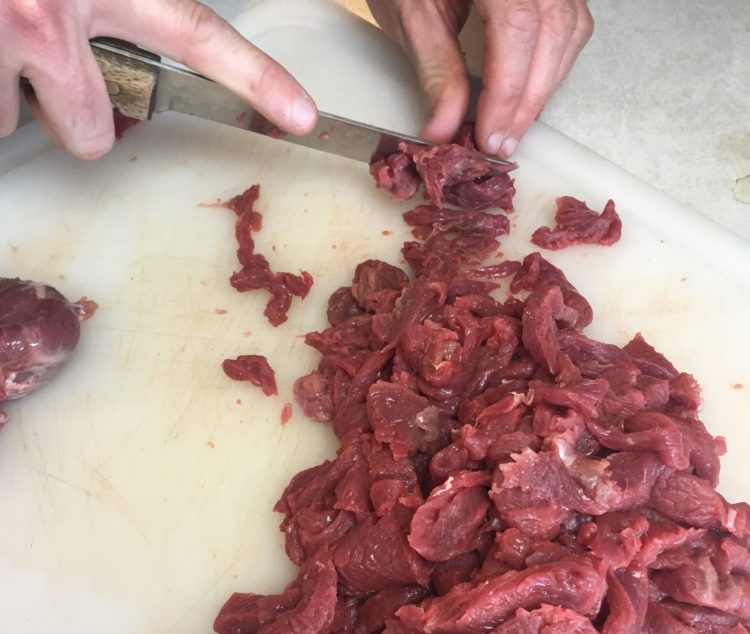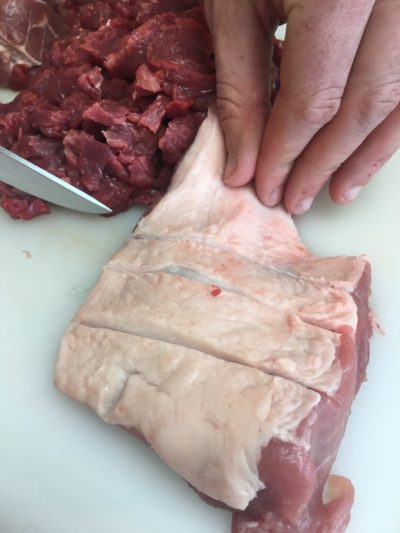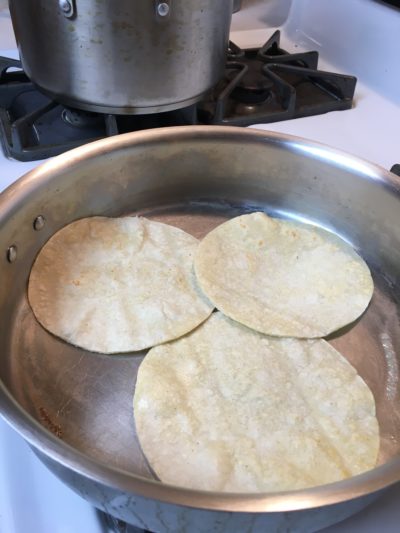This article is one of many from our Aoudad Prep Series
Table of Contents
Can you eat Aoudad?
You’re damn right you can. Is it the easiest game meat to prepare? No. However, it really isn’t that much different than other “tough” species like Mountain Goat or Ibex. The name of the game is to fight the texture via slow cooking, cutting thin pieces of meat and/or grinding the meat.
I personally believe the bias against eating big Aoudad rams is more cultural than anything else. Folks say “they smell like hell” or “my dog won’t even eat that rank meat”. Yes, a big ram does stink but so does a slammer big horn sheep or a bull elk who has spent the past two weeks of the rut pissing all over his belly and front legs. Be careful how you take care of the animal in the field, and aoudad meat smells just like other game meats. When I have prepared it, most folks describe the taste as mild, almost lean beef-like.
Cliff and Amy’s Aoudad Tacos Recipe
This recipe throws in the three important components to any Mountain Goat, Ibex or Aoudad preparation: 1) Physical Texture – We slice the meat thin. 2) Lean – We add a little pork fat for taste and extra fat. 3) Cooking Texture – We slow cook the meat for about 1 hr. This taco recipe is basic and doesn’t include any specific amounts or exact cooking times. Make it to your taste.

Ingredients
- Purple Onion
- Cornstarch
- Limes
- Fresh Garlic
- Corn Tortillas
- Red Chili – I use Blue Ribbon Medium Hot
- Fatty Pork Cut – I use shoulder roast
- Aoudad Back Strap
- Butter
- Salt and Pepper
You will need a deep stock pot and a large skillet.
Step 1 – Prepare the Meat
One of the most important components of preparing game meat is to remove all the silver skin, hair, dirt, etc… A lot of this can be done in the field, but tidy it all up before cooking.

Separate the muscle groups on the backstrap and slice into 6-12″ pieces so you can better remove everything except the red meat.

Next, cut thin slices across the grain of the backstrap. Shooting for slices 1/4″ thick is a good target.

Once you have all the slices done, push them together in batches and cut across the meat. The result is best described as “diced”.

When I add any domestic meat/fat to wild game meat, I try to use as little as possible so I retain most the healthy aspects of the game meat. For this preparation, using a well trimmed yet fatty pork shoulder, I used roughly 1/6th the amount of the shoulder relative to aoudad meat. Unlike the aoudad, I cut the pork shoulder into larger chunks around 1×1 inch squares. Mix the pork with the aoudad and season with salt and pepper.




Step 2 – Brown the Meat
Start off by cutting some fresh garlic and adding it to a hot pan with an ample amount of butter. Don’t skimp on that butter! Next, slowly add the meat. As the meat cooks on high heat, periodically stir. You want the meat to brown with a golden color before turning the heat off. The meat should be completely cooked on the outside, but retain it’s “juicyness”.


Step 3 – Slow Cook in Chili
This is where it starts to get fun. First, move the browned meat into a deep stock pot. Next, add the Blue Ribbon red chili with a cup of water. As we slowly cook the meat in the chili over low heat, we will get a reduction in the chili. The water mitigates some of the natural thickening and keeps all the meat covered while cooking with the chili. Stir occasionally and cook on low heat for 1-1.5 hrs.


As you get close to being done cooking the meat, use small amounts of cornstarch and water to thicken/thin the chili sauce to the consistency you prefer. For making tacos, you need the sauce to be close to syrup thickness. When using cornstarch, never quit stirring or it will ball-up into little gross dumplings.

Step 4 – Serve
This is all up to personal preference. We chop up some fresh onion and lettuce, warm up corn tortillas, cut limes, and serve with cilantro. Enjoy!












































